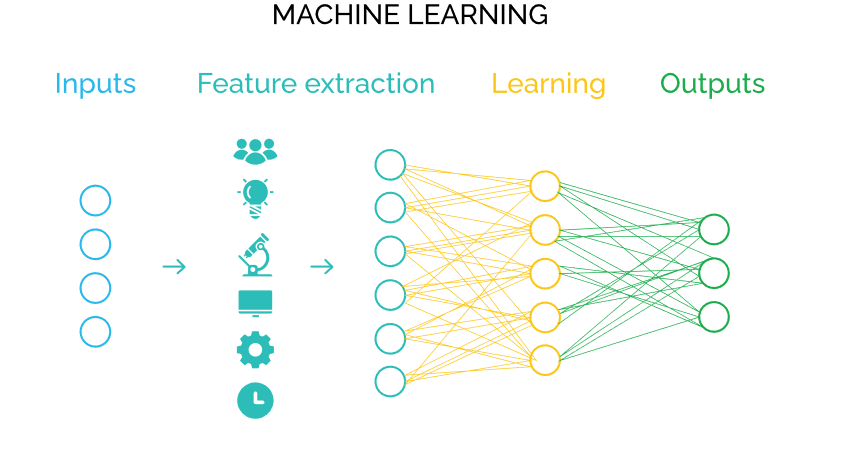Machine Learning
1. What is Machine Learning?
Machine Learning is a subset of artificial intelligence (AI) that involves developing algorithms and models that enable computers to learn from and make predictions or decisions based on data. It focuses on creating systems that can improve their performance over time without being explicitly programmed.
2. What is the difference between Artificial Intelligence, Machine Learning, and Deep Learning?
Difference between Artificial Intelligence, Machine Learning, and Deep Learning:
Artificial Intelligence (AI): AI is the broader concept of creating machines that can simulate human intelligence. It encompasses various techniques, including Machine Learning and Deep Learning, to enable machines to perform tasks that typically require human intelligence.
Machine Learning: Machine Learning is a subset of AI that involves training models on data to make predictions or decisions. It’s about learning patterns from data to generalize and perform well on new, unseen data.
Deep Learning: Deep Learning is a subfield of Machine Learning that focuses on using neural networks with multiple layers (deep neural networks) to learn intricate patterns and representations from data.
3. How does Machine Learning work?
Machine Learning involves several steps:
- Data Collection: Gather relevant data that the model will learn from.
- Data Preprocessing: Clean, transform, and prepare the data for training.
- Feature Selection/Extraction: Choose or extract relevant features from the data.
- Model Selection: Choose a suitable algorithm or model architecture.
- Training: Feed the model with labeled data to learn patterns and relationships.
- Evaluation: Assess the model’s performance on unseen data using metrics.
- Prediction/Inference: Use the trained model to make predictions or decisions on new data.

4. What are the types of Machine Learning?
The types of Machine Learning:
- Supervised Learning: Models are trained on labeled data to learn patterns and make predictions or classifications.
- Unsupervised Learning: Models analyze unlabeled data to identify patterns, clusters, or relationships.
- Semi-Supervised Learning: Combines labeled and unlabeled data for training.
- Reinforcement Learning: Agents learn to take actions in an environment to maximize rewards.
- Deep Learning: Subset of Machine Learning using deep neural networks for complex tasks.
5. What are the applications of Machine Learning?
The applications of Machine Learning:
- Image and Video Analysis: Object recognition, image classification, video summarization.
- Natural Language Processing: Language translation, sentiment analysis, chatbots.
- Healthcare: Disease diagnosis, personalized treatment, drug discovery.
- Finance: Fraud detection, risk assessment, algorithmic trading.
- Recommendation Systems: Product recommendations, content suggestions.
- Autonomous Vehicles: Self-driving cars, navigation, obstacle avoidance.
- Industrial Automation: Predictive maintenance, quality control.
- Gaming: Game AI, opponent behavior modeling.
- Climate Prediction: Weather forecasting, climate modeling.


